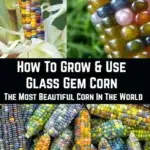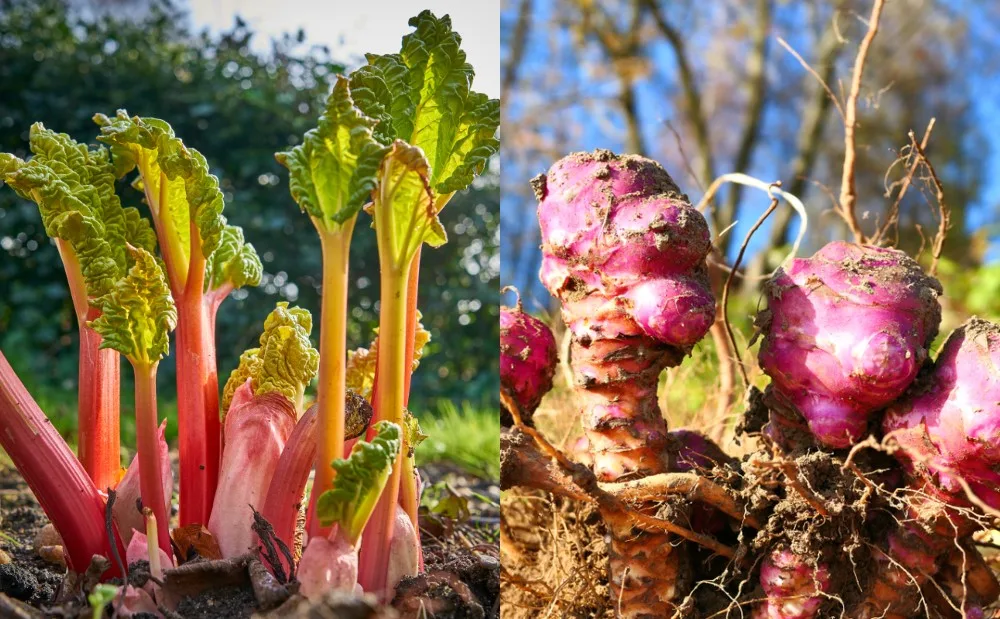
There are times when you find a plant that perfectly combines beauty and utility. Glass gem corn is one of the best and most stunning examples of this phenomenon.
The breathtaking colours of these corn cobs must be seen to be believed. But they are more than just a novelty.
Glass gem corn is the perfect example of the interesting results that can be achieved through selective plant breeding. The results are not synthetic. This colorful corn is the result of human action. But it is the result of human action working in collaboration with nature.
It could be viewed as an excellent example of what we can achieve when we do not fight against nature, but work in harmony with nature to achieve our goals.
Nature is infinitely varied and infinitely beautiful. By harnessing and taming it in our gardens, we can grow an amazing variety of food.
Glass gem corn is something special, an example that celebrates the variety of heritage crops, and shows us that we can grow far more than just the same old boring commercial varieties in our gardens.
If you’ve already grown some interesting heritage varieties of common fruits and vegetables in your garden, this crop could be something new to try.
Biodiversity is hugely important. We should always look to protect and increase plant and animal diversity in nature. But we should also aim to improve biodiversity of food crops.
By growing a variety of interesting heritage and heirloom crops, we can help retain diversity in our food. The more diversity there is in out food systems, the more resilient they will be.
What is Glass Gem Corn?
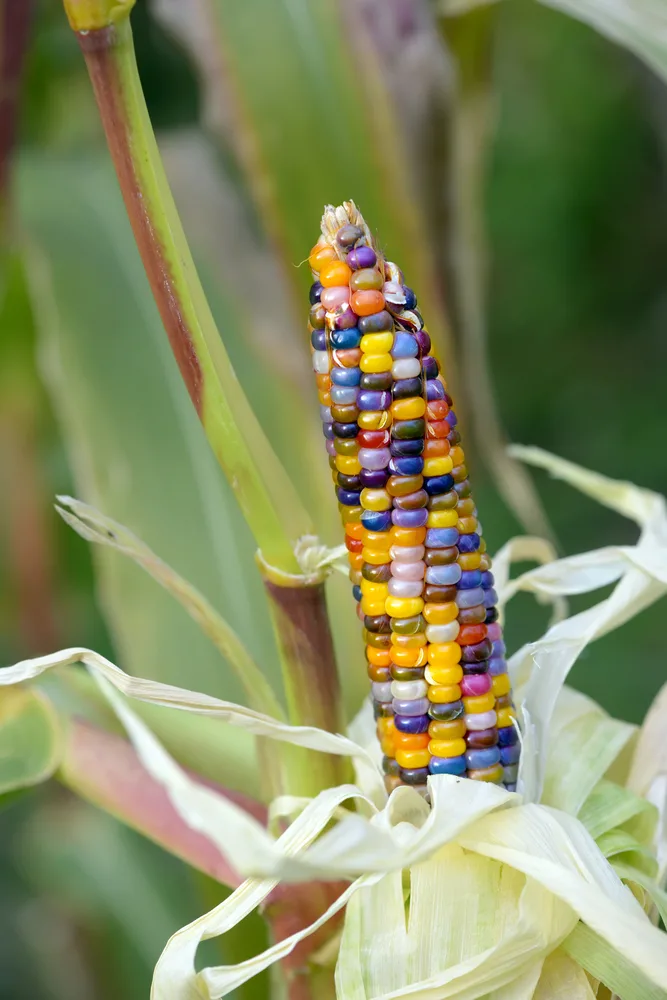
Glass gem corn is an amazingly vibrant strain of rainbow coloured corn. It is a type of ‘flint corn’ which is grown not for eating off the cob, but for making popcorn, or grinding into cornflour.
With ‘flint corn’, the corn is left on the plants to dry. The kernels will eventually begin to lose their shine and vibrancy and dry out. They are harvested only when the kernels are as hard as flint – which is where the name ‘flint corn’ comes from.
Of course, this corn is also grown for its ornamental appeal.
It first sprung to public attention back in 2012, when images were posted online and became something of an internet sensation.
Many more people since then have been drawn to look into this beautiful colored corn and to look into growing it for themselves.
The History Behind Glass Gem Corn
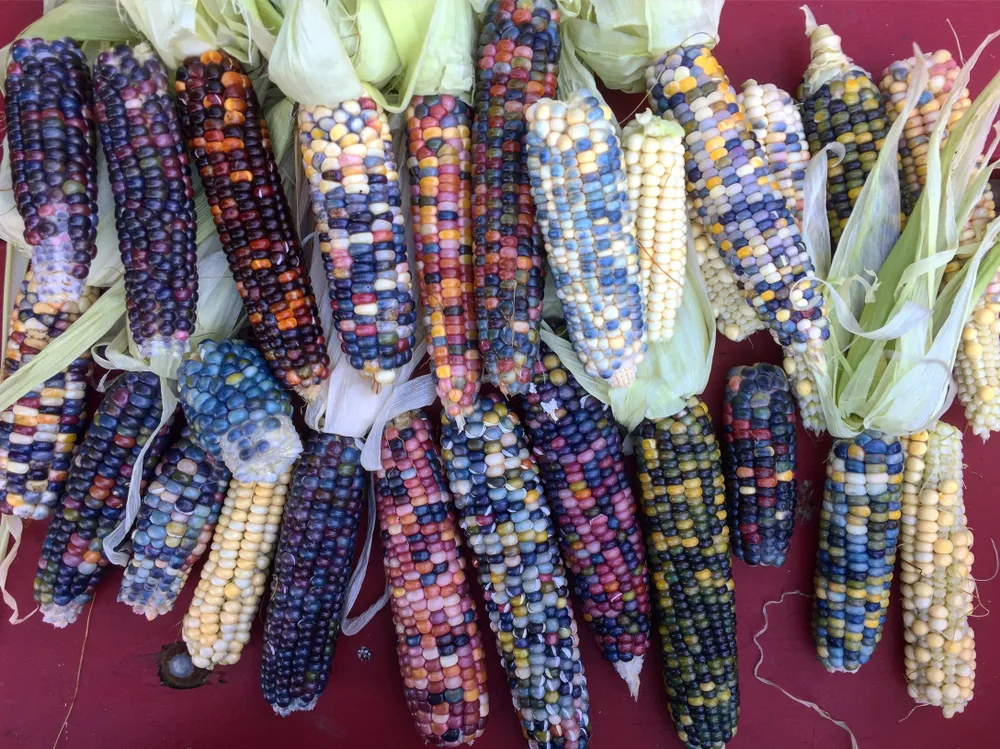
But while the bright colors are what first draw people in, it is the interesting history behind this strain that really inspires. In order to see the true beauty in glass gem corn, you need to learn a little about where it came from.
The story of glass gem corn begins way back before the 1800s, when native American tribes grew ancestral types of corn. The native tribes knew and grew a range of types of corn, using traditional, sustainable practices.
Corn was a staple of the indigenous peoples of the Americas, from South America to the Great Lakes. It is believed to have originally been domesticated in Mexico, and may be one of the oldest agricultural crops in the world. Different tribal groups created distinct strains, which were very much tied up with their distinct heritage and self-identity.
Carl Barnes – The Reclaiming of Lost Heritage Corn Varieties
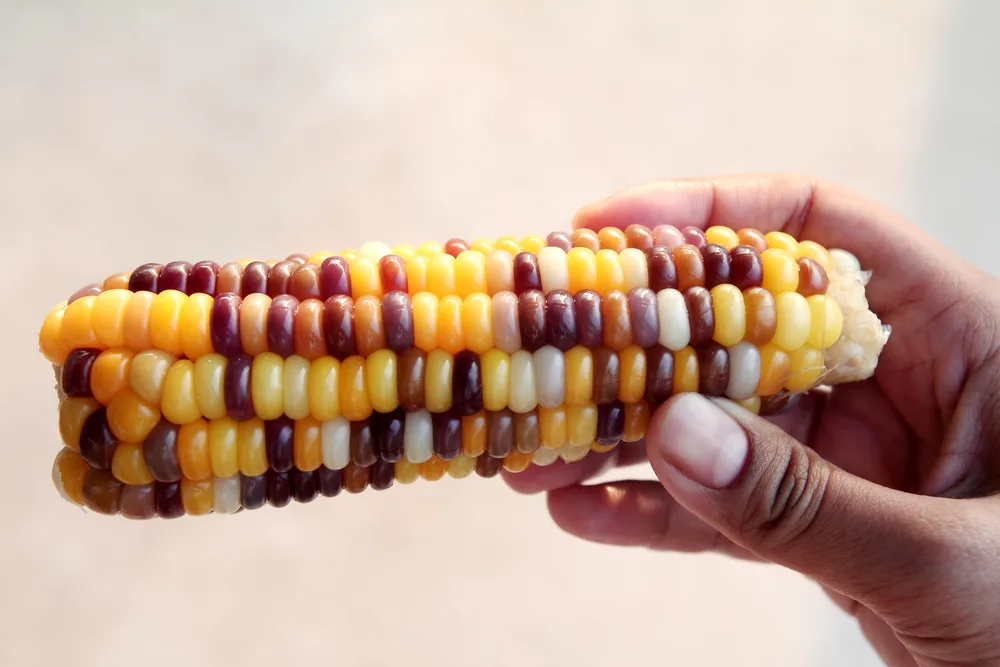
Over time, as tribes were disenfranchised and relocated by European settlement, some ancestral strains of corn were lost.
Then, some time in the later 20th Century, an Oklahoma farmer called Carl Barnes (1928-2016) set out to grow older corn varieties as a way to reconnect with his Cherokee heritage.
Though growing older varieties, Barnes was able to isolate ancestral strains that had been lost to tribes when they were relocated to what is now Oklahoma. He began to exchange ancient corn seed with people he had met and befriended all over the country.
He was able to reconnect elders from various tribes with specific, traditional corns, which helped their people to reclaim their cultural and spiritual identities. The corn literally represented their blood line, their language – was central to their sense of who they were. To those he met and befriended, he was known by his spiritual name – White Eagle.
Barnes began selecting seed from the most colorful cobs. Over time, this selective breeding led to the creation of some truly amazing rainbow-colored corn.
(Originally, according to one account, a cross involving Pawnee miniature popcorns with Osage Red flour and Osage ‘Greyhorse’.)
But far more than this, he is now remembered with gratitude for his work to collect, preserve and share native corn varieties.
Continuing the Work
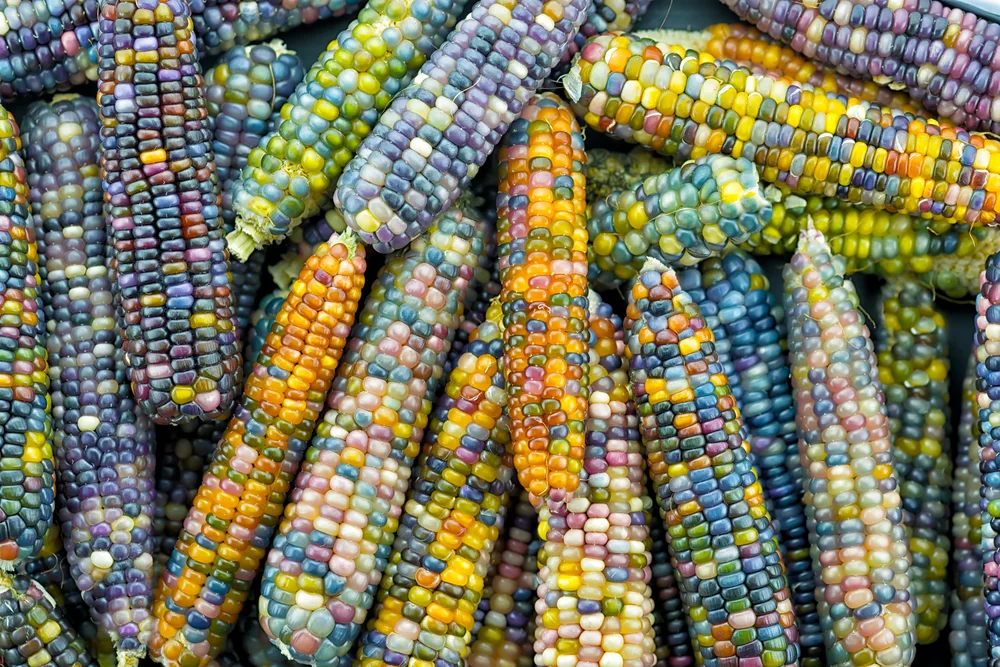
A fellow farmer named Greg Shoen met Barnes in 1994, and was blown away by his amazing rainbow-coloured corn. Barnes gave Shoen some of that rainbow seed the following year and Shoen went on to sow them. The two remained close and Shoen received more samples of the rainbow seed over the years.
Schoen moved to New Mexico in 1999, and grew only small quantities of the colorful corn. Then, in 2005, he began to grow larger plots near Santa Fe. He also grew other, more traditional varieties.
The rainbow corn crossed with other traditional varieties and new strains were created. Over time, Schoen was able to make the corn ever more vibrant and vivid. ‘Glass Gems’ was the name Schoen gave to the stunning blue-green and pink-purple corn he grew in 2007.
It was an image of this crop that went viral in 2012 and turned this strain into an internet sensation.
Sourcing Glass Gem Corn
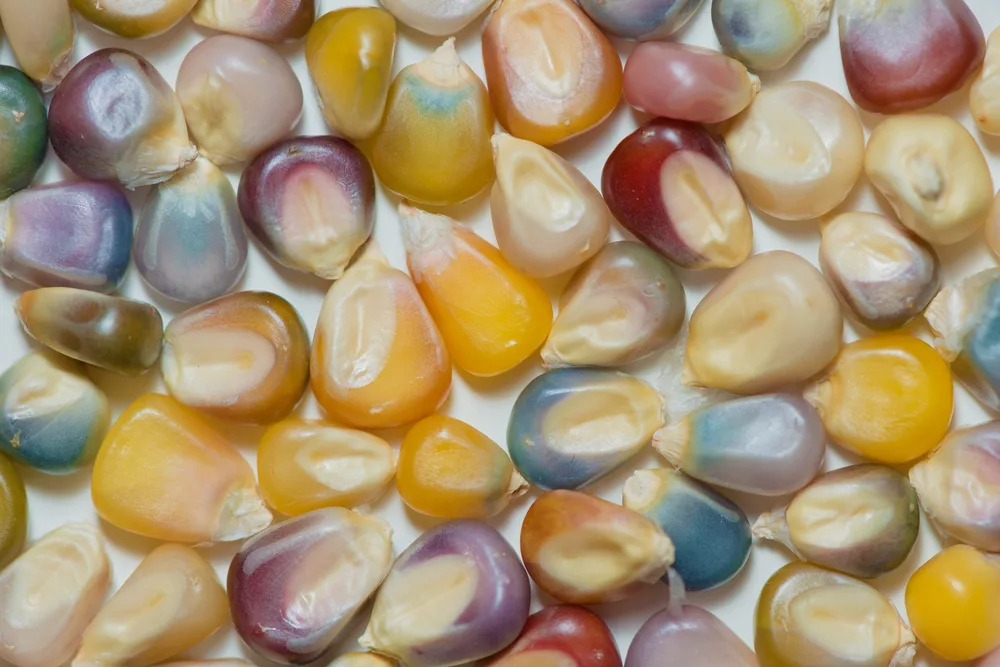
If you would like to try your own hand at growing some of this colorful corn, or, for that matter, a wide range of other beautiful and fascinating heritage varieties, then here are some places where you can get your hands on some:
In the US:
Burpee Seeds (Through Amazon.com)
In the UK/ Europe:
Premier Seeds (Though Amazon.co.uk)
Where To Grow Glass Gem Corn
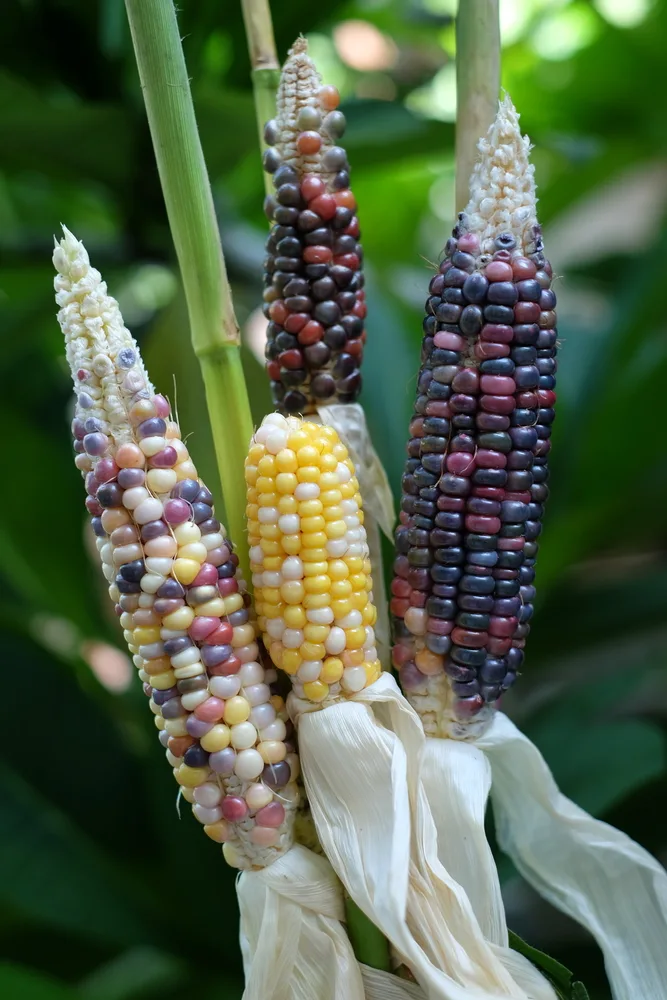
Like other heritage corns, glass gem corn needs plenty of warmth and sunlight over the summer months to grow well.
It should be positioned in an area of full sun. And ideally somewhere relatively sheltered where it will not be exposed to high wind.
If you are trying to grow your corn in more northerly climes, with a shorter growing season, you may have more success if you grow it in a high tunnel or greenhouse structure.
Note that this glass gem corn is a ‘flint’ corn. This means it will require a longer season to come to maturity. So it may not be the easiest thing to grow where the season is short. (Consider trying shorter season sweetcorn bred for a short growing season and cooler conditions instead.)
It is important to plant the sweetcorn in fertile soil. But it can grow well in a range of soil types and at a range of pH levels. The soil should be moist but free-draining and ample moisture must be available through the growing season.
Sowing Glass Gem Corn
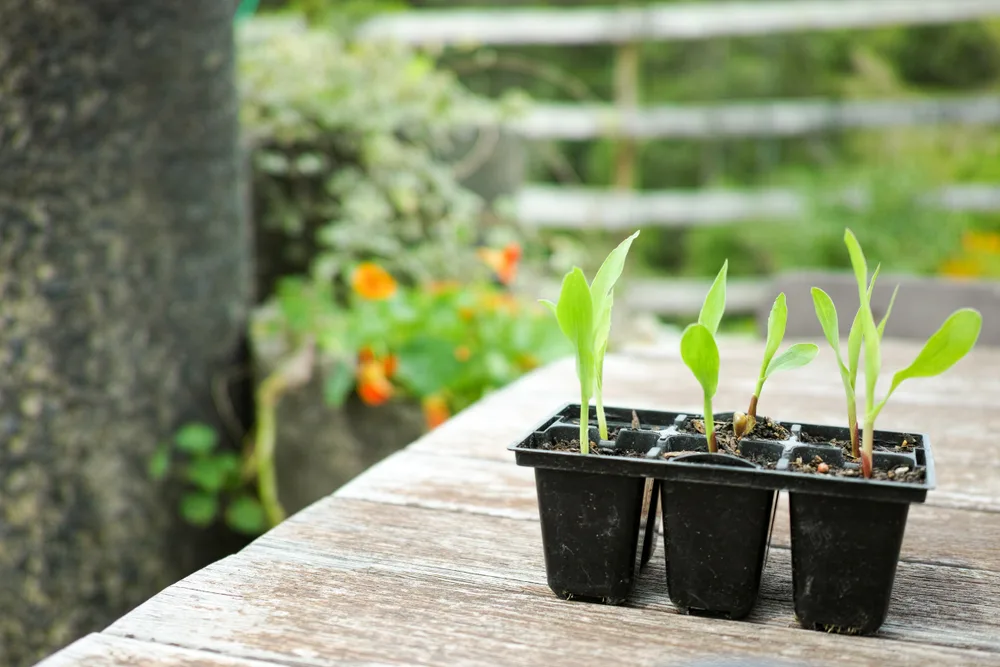
If you are up against a short growing season then it is a good idea to sow your sweetcorn early – indoors – before transplanting your young plants outside.
Consider using biodegradable plant pots (or toilet roll tubes) as modules to minimise root disturbance.
Be sure not to sow or transplant too early. You should be absolutely sure that all risk of frost and night time chill has passed before you sow or plant these crops in your garden. Soil should have warmed to at least 60 degrees F.
Corn should not be sown in long rows, but rather in blocks. Since this is a wind pollinated crop, pollination rates and yield will be higher if you plant in blocks, with at least three rows, rather than in one long, straight line. This corn should be planted at a spacing of around 6 inches between plants.
All heritage corn varieties will thrive if you grow them as indigenous groups across the Americas did. Native tribes often grew corn in polycultures, as part of the famous ‘three sisters’ planting plan.
Three Sisters Planting Scheme
Native Americans often planted three different crops together, and called them the ‘three sisters’.
These three plants were corn, beans and squash, or pumpkins. Like sisters, each of these plants has different characteristics, and like sisters, these plants can help one another in various ways.
Glass gem corn, like other corn varietals, will provide a support for beans to climb.
The beans are a nitrogen fixer which will help to feed the ‘family’ of plants.
Squash, planted around the outside of the bed, will shade the soil, helping to retain moisture and reduce weeds.
Read more about the three sisters planting technique in our article here.
Caring For Glass Gem Corn
Mulch well around your glass gem corn with an organic mulch to provide slow release fertilization throughout the growing season.
Make sure that your corn gets adequate water throughout the season, and feed with a general purpose organic liquid feed once cobs begin to form.
Corn will generally require around an inch of water per week.
Harvesting Glass Gem Corn
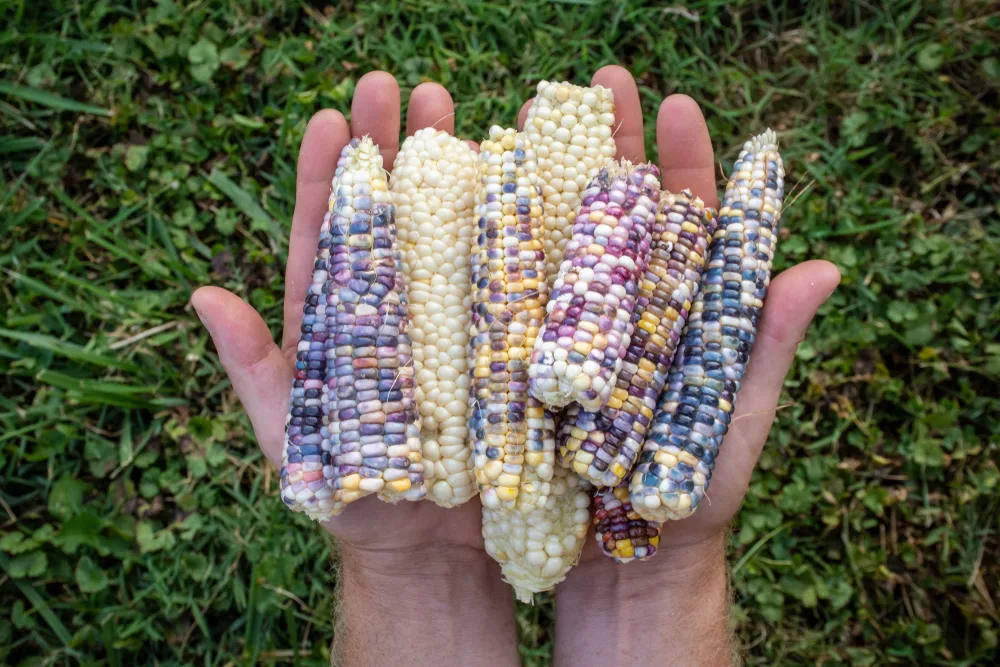
With ‘flint corn’, the corn is left on the plants to dry. The kernels will eventually begin to lose their vibrancy and dry out. They are harvested only when the kernels are as hard as flint – which is where the name ‘flint corn’ comes from.
Unlike sweetcorn, which is eaten while juicy and fresh, flint corn is harvested in fall, when the outer husks are dry and brown. To remove the husked cobs from the stalk, twist the husks while pulling downwards with one fluid movement.
After removing the husked cobs from the stalk, peel back the dried, papery husks to reveal the exciting colors within. You can remove the husks altogether, or leave them on for decoration.
Related Reading: 11 Practical Ways To Use Corn Husks
The corn kernels will have begun to dry on the plant. But you should now continue this process. Spread out your corn cobs on a drying rack. Turn them once a day to ensure that they dry out evenly.
Your corn will be fully dry when you cannot press your fingernail into the kernels and they are as ‘hard as flint’. When it is completely dry, you can keep your glass gem corn for many years. It will also be ready for further processing if required.
Using Glass Gem Corn
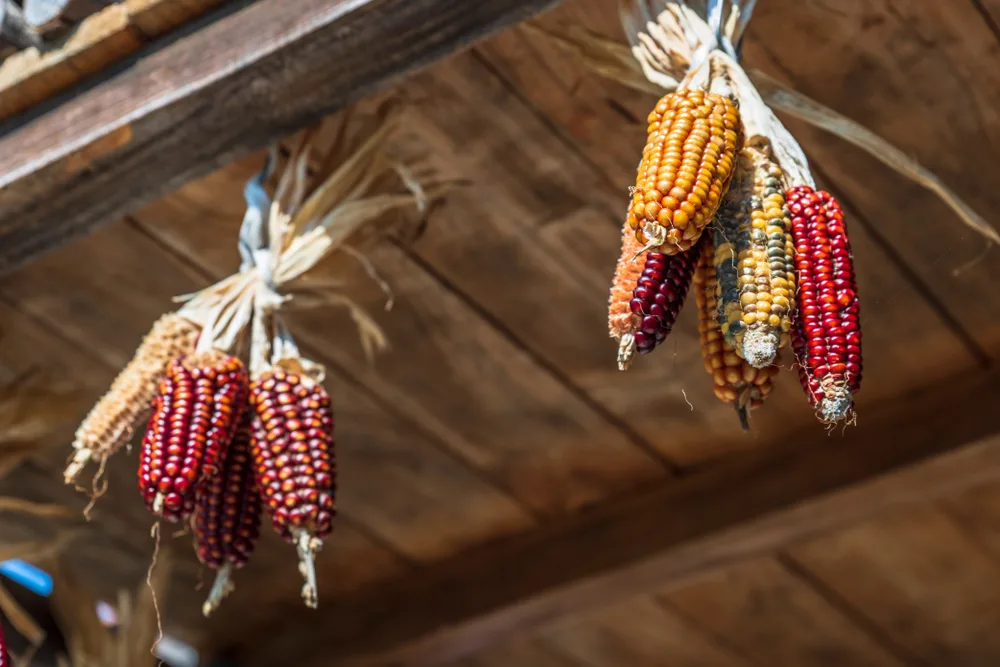
Of course, you could simply use your glass gem corn ornamentally, to decorate your home. But if you are interested in keeping heritage varieties alive and maintaining crop diversity, you should definitely set some of the seed aside to grow in your garden or on your farm next year.
By selecting the most vibrantly coloured kernels, in the shades you desire, you can selectively breed new versions of this rainbow corn for yourself, and create new strains to take onwards through your plant growing adventures.
This type of corn is not eaten fresh, but you can process it for eating in several different ways.
Most commonly, this type of corn is used as popcorn. Of course, once they pop, you will only see tiny specks of their former colours, and they will have expanded into the fluffy white popcorn clouds you may be used to seeing.
Related Reading: How To Grow Your Own Popcorn
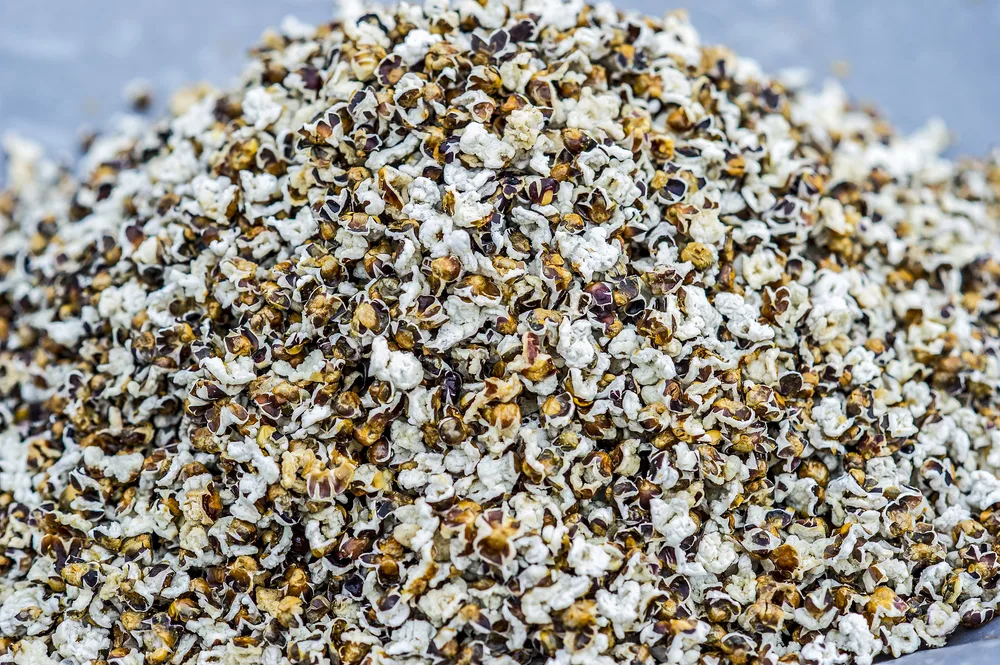
Why not experiment with popping glass gem corn and using it to make a range of more interesting an unusual sweet or savory popcorn recipes?
You can also blend your glass gem popcorn to make cornmeal. Cornmeal can be stored in a sealed container in your fridge for around a year. You can use this cornmeal to make a range of baked goods.
Finally, you could also consider treating your glass gem corn with an alkaline to make classic hominy. Hominy corn can be used to make grits.
If you live in a warmer temperate climate zone, glass gem corn could be the perfect way to expand your heritage growing and grow something beautiful and useful on your homestead.
Read Next:

Get the famous Rural Sprout newsletter delivered to your inbox.
Including Sunday musings from our editor, Tracey, as well as “What’s Up Wednesday” our roundup of what’s in season and new article updates and alerts.


